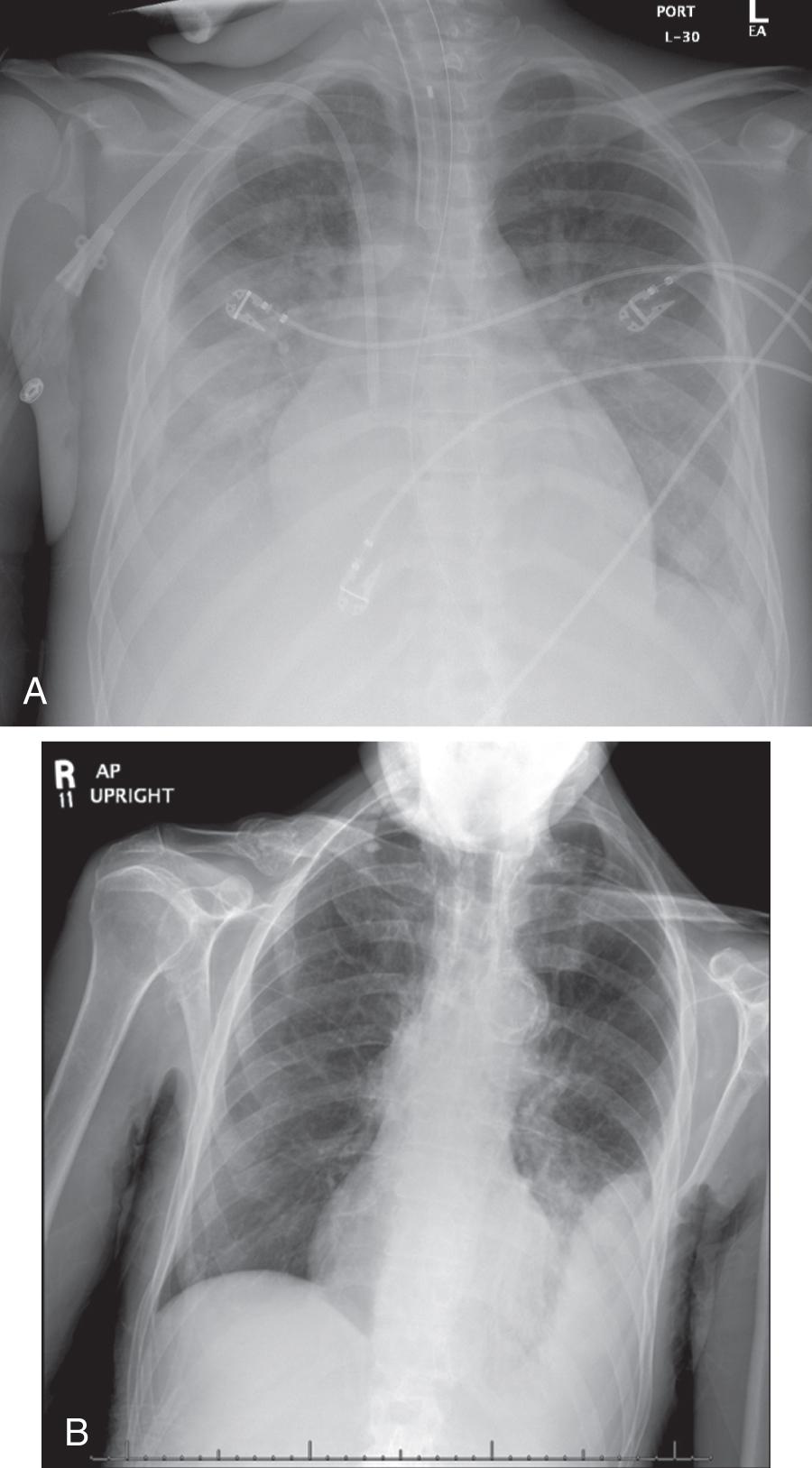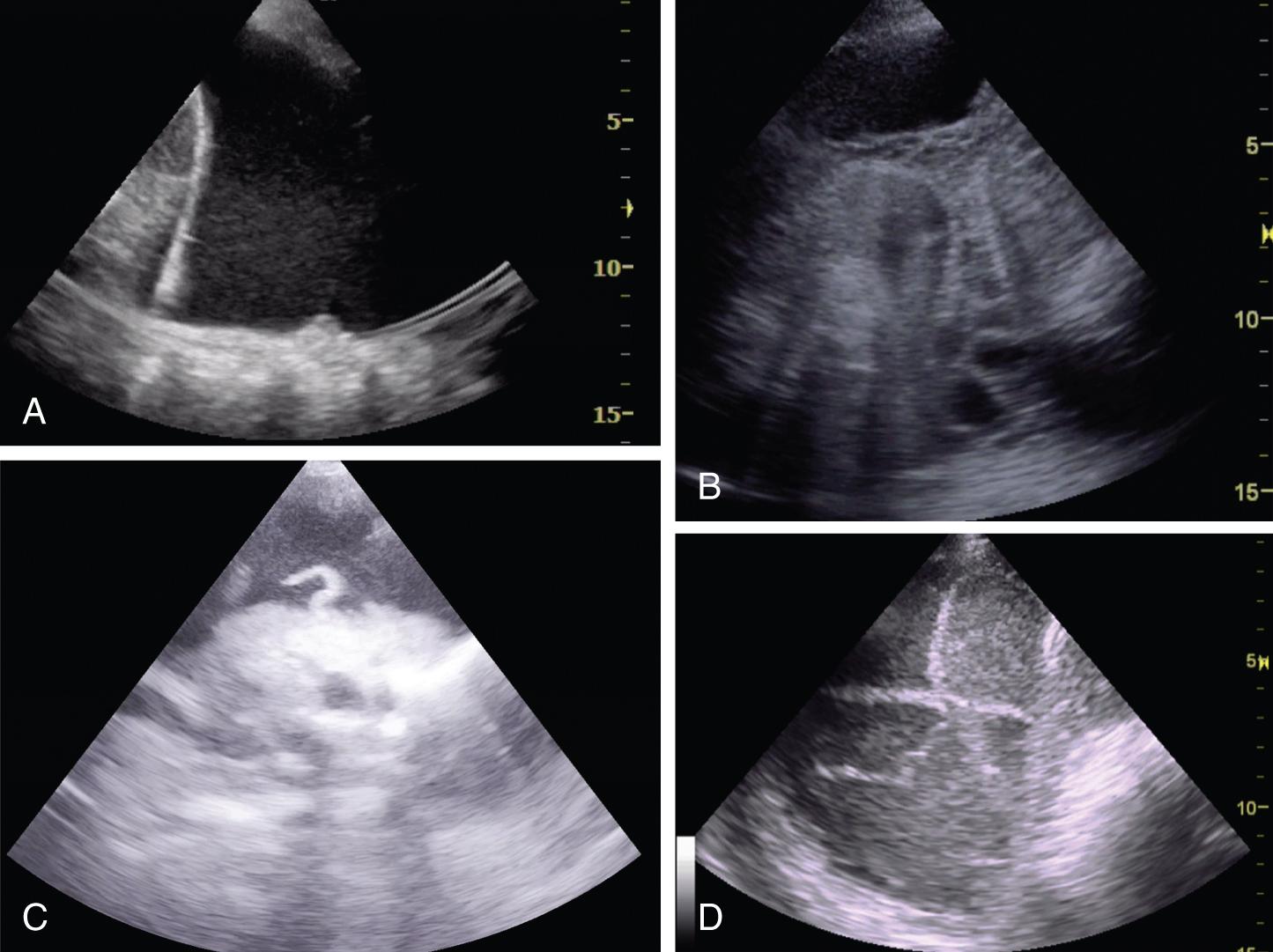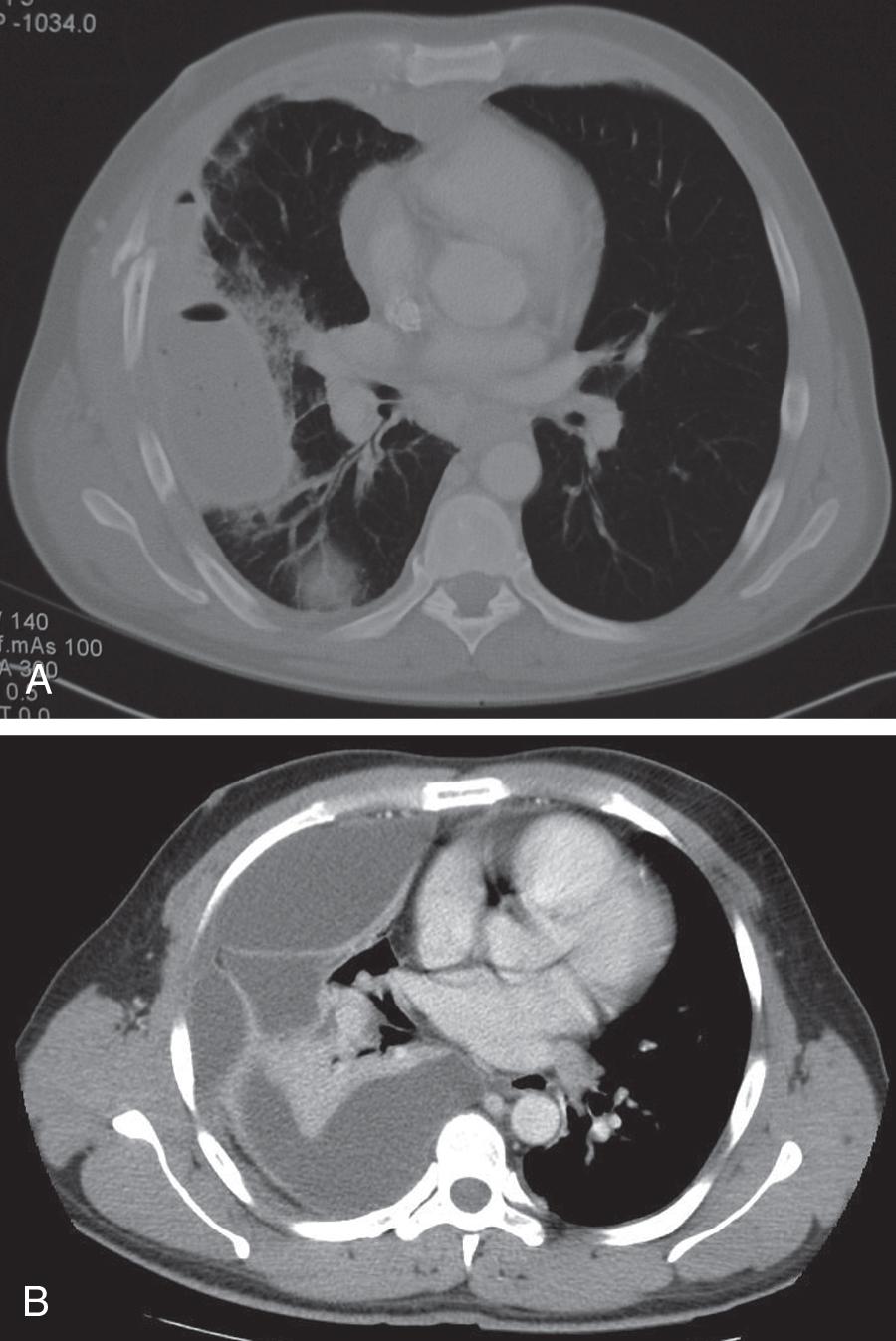Physical Address
304 North Cardinal St.
Dorchester Center, MA 02124
Pleural effusions are common in the intensive care unit (ICU). Estimated incidence depends on screening method and ranges from 8% by physical examination to 60% by ultrasound. , Transudative causes of effusion (heart failure, hypoalbuminemia) predominate in the medical ICU, whereas hemothorax and postsurgical effusions occur more frequently in trauma and cardiac ICUs. In any setting, 83% of patients with acute respiratory distress syndrome have pleural effusions as assessed by computed tomography (CT) scan.
The pleural space is bound by the visceral pleural lining of the lung and the parietal pleura that covers the internal thoracic cavity. During health, a small amount of fluid within the pleural space is maintained by a balance between pleural fluid generation and removal. Approximately 0.01 mL/kg/hr of pleural fluid is generated per day (∼16 mL/day in a 70-kg adult) from the vascular space. Pleural fluid removal occurs via pores in the parietal pleura, which are large enough to allow egress of erythrocytes. Pleural fluid resorption has a remarkable capacity, with the ability to increase approximately 30 times the basal rate. Because of the slow rate of fluid production and large capacitance for removal, pathologic pleural effusions usually result from both an increase in the production of fluid and a decrease in absorption.
Pleural effusions are best classified as transudates or exudates by Light’s criteria ( Table 12.1 ). In general, etiologies that primarily affect hydrostatic pressure (e.g., heart failure) or intravascular oncotic pressure (e.g., nephrotic syndrome) will result in transudative effusions, whereas disease that causes increased vascular permeability and obstruction of parietal pleural lymphatics (e.g., infection, malignancy) will result in exudative effusions. Occasionally, an abnormal connection between the pleural space and an extrathoracic compartment will result in pleural effusion, such as seen in hepatic hydrothorax ( Table 12.2 ).
| Exudative Pleural Effusion | Value |
|---|---|
| Pleural fluid-to-serum ratio of total protein | >0.5 |
| Pleural fluid-to-serum ratio of LDH | >0.6 |
| Pleural fluid LDH level | More than two-thirds upper limit of normal for serum |
| Transudative | Exudative |
|---|---|
| Intrathoracic | |
| Congestive heart failure | Infection |
| Nephrotic syndrome | Bacterial |
| Cirrhosis | Tuberculosis |
| Iatrogenic volume overload | Fungal |
| Central venous occlusion | Viral |
| Parasitic | |
| Malignancy | |
| Pulmonary embolism | |
| Rheumatologic disorder | |
| Post–cardiac injury or surgery | |
| Uremia | |
| Asbestos | |
| Drug-induced | |
| Radiation | |
| Yellow nail syndrome | |
| Hemothorax | |
| Chylothorax | |
| Esophageal rupture | |
| Extrathoracic | |
| Hepatic hydrothorax | Pancreaticopleural fistula |
| Peritoneal dialysis | Feeding tube migration |
| Urinothorax | |
| Bilothorax | |
| Cerebrospinal fluid leak | |
| Central venous catheter migration |
Mechanical changes to the lung, chest wall, and diaphragm occur when fluid collects in the pleural space. Because of the outward recoil of the chest wall and inferior displacement of the diaphragm, the lung volume decreases approximately one third. In a healthy lung, the reduction in lung volume usually does not cause gas exchange derangements likely because ventilation and perfusion are reduced similarly in the areas of lung collapse. Studies in patients with pleural effusions and normal underlying lungs have demonstrated that removal of pleural fluid can worsen gas exchange. There is inconsistent evidence with regard to the benefit of evacuation of pleural effusion in mechanically ventilated patients. Several studies have demonstrated improvement in oxygenation and respiratory mechanics when effusions are drained in ventilated patients, but whether this translates to meaningful improvement in clinical outcomes is not clear.
Physical examination findings of pleural effusion include reduced breath sounds, dullness to percussion, decreased tactile fremitus, and asymmetric chest expansion. However, many physical examination maneuvers are difficult to perform accurately in critically ill patients because of many factors, including altered breath sounds from mechanical ventilation, difficulty with positioning, and presence of surgical drains and dressings.
Chest x-ray has long been used to evaluate for suspected pleural effusions. Conventional upright x-rays can detect effusions of approximately 50 mL in the lateral view and 200 mL in the posteroanterior projection. Lateral decubitus can detect even smaller volumes but is difficult to perform in most critically ill patients. On upright or semi-recumbent films, blunting of the costophrenic angles may be the only sign of small pleural effusion. Larger effusions can cause obliteration of the hemidiaphragm and mediastinal shift away from the effusion. The sensitivity of x-ray for diagnosing pleural effusion in the critically ill is lower because of the inability to position correctly, lung opacification from alternative causes, and lower quality of portable x-rays. Commonly, free-flowing pleural effusions will appear as hazy lower lobe opacities with indistinct diaphragm on portable anteroposterior semi-upright x-rays ( Fig. 12.1 A). Loculated effusions can appear as a “D” shape with the flat portion against the lateral edge of the pleura. Pleural fluid isolated to the fissure, so called “pseudotumor,” can have the appearance of an intraparenchymal mass or consolidation on x-ray (see Fig. 12.1 B).

Point-of-care ultrasound can be performed at the bedside in the ICU with ease and has increased sensitivity for pleural fluid. Ultrasound for pleural effusion can detect as little as 5 mL of fluid and has sensitivities similar to that of chest CT. Ultrasound can differentiate consolidated or atelectatic lung from pleural fluid. In addition, features of pleural effusions, including debris, loculations, and pleural thickening on ultrasound, can assist with classifying collections as complex rather than simple effusion ( Fig. 12.2 ). Pleural thickening and nodularity on ultrasound are suggestive of cancer and should trigger further diagnostic evaluation with advanced imaging and/or pleural biopsy.

Chest CT allows for the best visualization of size and characteristics of pleural effusions ( Fig. 12.3 ). Contrast examination is not necessary in all pleural effusions but is useful to distinguish atelectatic or consolidated lung (which will enhance with pleural timed intravenous [IV] contrast) from pleural fluid. Hounsfield units >15.6 in the pleural fluid is suggestive of hemothorax.

Pleural fluid sampling through thoracentesis can be safely accomplished at the bedside in patients with >2 cm of pleural fluid between parietal and visceral pleura on bedside ultrasound. Fluid sampling can be deferred in patients with pleural effusions thought to be simply related to volume overload. However, if there is clinical concern for infection in the pleural space (i.e., ipsilateral pneumonia, unexplained fever, elevated white blood cell count) or hemothorax, prompt evaluation should be pursued. Ultrasound guidance is the preferred method for thoracentesis, as there are lower rates of pneumothorax with the use of ultrasound. Marking of the skin for thoracentesis location should be performed with bedside ultrasound while the patient is in the correct position for the procedure to ensure that the overlying skin does not shift with patient movement before sampling. Although coagulopathy, thrombocytopenia, and use of antiplatelet agents previously were thought to increase the risk of bleeding, several recent studies have challenged that notion. ,
Become a Clinical Tree membership for Full access and enjoy Unlimited articles
If you are a member. Log in here